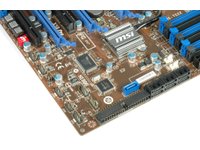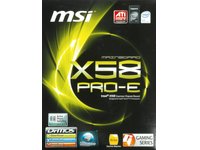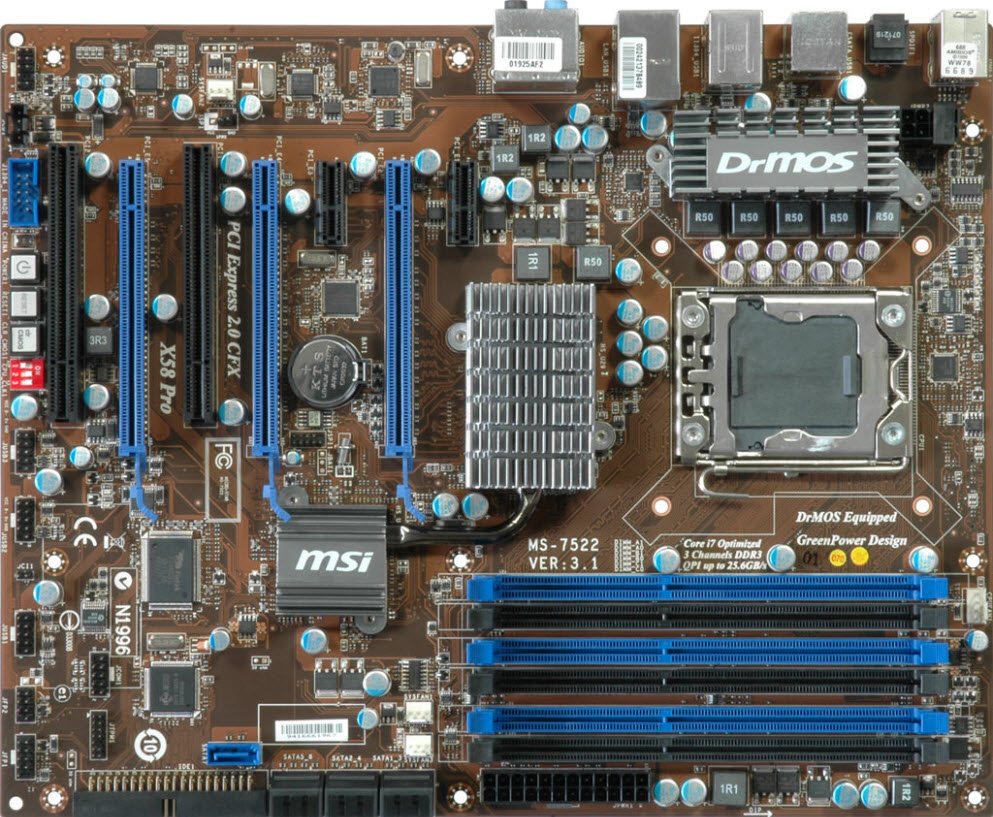Mainstream Or Hardcore? Two X58 Motherboards Compared
You need Intel’s LGA 1366 interface and an X58-based platform in order to run the latest six-core processors, but which board should you pick? We're comparing a mainstream and flagship platform from the same company to explore the worth of high-end X58.
Mainstream: MSI X58 Pro-E
The X58 Pro-E is a mainstream motherboard, although the word “mainstream” and “X58” don’t really belong in the same sentence. While some of the cheapest X58 solutions start at around $160, we opted for the Pro-E since the $30 to $40 premium provides a fully-featured motherboard solid enough for any user who doesn’t have significant overclocking or feature needs.
Hard Features
The X58 Pro-E takes advantage of the many features offered by Intel’s chipset, including six SATA 3Gb/s ports, two 32-bit PCI 2.3 and two x1 PCIe 1.1 ports, dual x16 PCI Express 2.0 slots, and an additional x16 PCIe slot powered by four PCI Express 1.1 lanes. Twelve USB 2.0 ports are available, and six of these sit ready on the ATX panel. Three additional headers for six more USB 2.0 ports wait on the motherboard. MSI decided to add a secondary mass storage controller by JMicron, adding two more SATA 3Gb/s ports (one of which is exposed as eSATA) and a parallel UltraATA/133 channel for legacy devices. The primary controller is part of the ICH10R southbridge and offers RAID 0, 1, 5, and 10 support across all six integrated SATA 3 Gb/s ports.
The six DDR3 DIMM sockets can accept up to 4GB each and support a triple-channel configuration. Overclocking is supported at speeds up to DDR3-1600 when running the reference clock at its 133 MHz default. As with any other X58-based platform, overclocking that reference clock will also alter the memory frequency as well. HD Audio support is enabled through the X58 chipset and a mainstream-class Realtek ALC889 codec. Realtek’s 8111C serves as the gigabit Ethernet PHY, and another JMicron controller provides two IEEE 1394a ports. We found four fan headers on the motherboard, as well as a connector for an optional TPM.
Soft Features and Quality Items
The Pro-E’s feature list is already fairly comprehensive. Therefore MSI added several proprietary features, such as the DrMOS voltage regulator design. This includes a five-phase voltage regulator, together with an oversized northbridge and voltage regulation heat sink. Solid capacitors and shielded chokes are mandatory in this price segment and don’t come as a surprise. MSI supports live software updating and BIOS updates via USB devices.
Overclocking
Get Tom's Hardware's best news and in-depth reviews, straight to your inbox.
The board comes with a full set of BIOS overclocking features, but it also includes a set of DIP switches that allow for dialing-in overclocked system speeds. We reached a maximum of 4.13 GHz on our Core i7-980X processor on the X58 Pro-E at an effective 1.472 V idle voltage. The BigBang Xpower didn’t reach higher speeds than the Pro-E, but that was due to cooling limitations.
Power Consumption
You would think that the X58 Pro-E might require less power than the BigBang Xpower because of its sleeker voltage regulator design, but this isn’t the case. In idle, the X58 Pro-E consumed 98W, while the hardcore motherboard is more efficient at 85W. Peak power was almost identical on both motherboards. In our overclocking testing, idle power remained lower on the X58 Pro-E, but it required a higher voltage to reach the 4.13 GHz overclock.


Current page: Mainstream: MSI X58 Pro-E
Prev Page Purchasing A Motherboard Isn’t Always Easy Next Page Hardcore Enthusiast: MSI BigBang Xpower